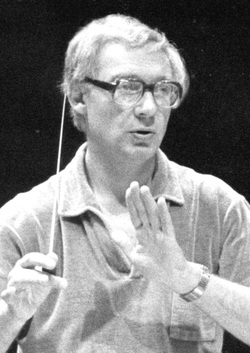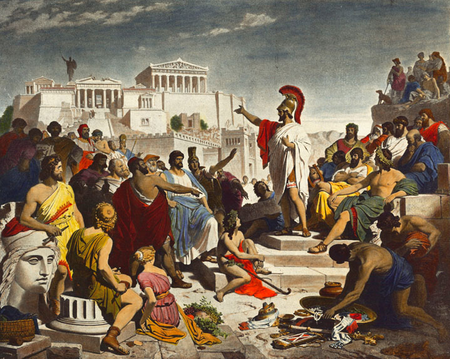Matin Responsory
Music in Church
St Mary Our Lady, Sidlesham
Welcome to the Saint Mary choir blog.
The church has both an adult and junior choir. We are affiliated to the Royal School of Church Music(RSCM). The junior choir are provided with tuition to enable them to gain their RSCM medals.
The senior choir is a SATB choir with its main responsibility to sing at the 10am Sunday service, including an anthem. See below for more details.
Our choirs do not require any fees to belong to them. New members to both the senior and junior choir are always welcome, whatever their standard. If you are interested in joining us please contact our Director of Music (Joanna) via the Contact Us page.
Sunday, 30 November 2025
Sunday 30th November 2025 First Sunday in Advent
Sunday, 23 November 2025
Sunday 23rd November 2025 Christ The King
Ye Servants of th'all Bounteous Lord Samuel Webbe Junior
Tuesday, 18 November 2025
Sunday 16th November 2025 Second Sunday before Advent
Benedictus in C C V Stanford
This is the Canticle of Zechariah, father of John the Baptist, and is taken from Luke's Gospel (Luke 1:68-79) It is sung daily at Morning Prayer.
Sir Charles Villiers Stanford (1852-1924) thought to be one of our great British composers was actually Irish, born in Dublin, although educated at The University of Cambridge and then studied music in Leipzig and Berlin.
Whilst an undergraduate, he was appointed organist of Trinity College, Cambridge and was one of the founding professors of the Royal College of Music, where he taught composition for the rest of his life. He was also Professor of Music at Cambridge. His pupils included Gustav Holst and Ralph Vaughan Williams whose fame went on to surpass his own.
He is best remembered for his sacred choral compositions for church performance in the Anglican tradition. Along with Hubert Parry and Alexander Mackenzie, he was thought responsible for the renaissance of music in the British Isles.
 |
| C V Stanford in 1921 from Wikipedia |
Tuesday, 11 November 2025
Sunday 9th November 2025 Remembrance Sunday
So They Gave Their Bodies Peter Aston (1938- 2013) From Pericles' Funeral Oration (Athens 431BC) translation Alfred Zimmern
Peter Aston was born in Birmingham. He studied at The Birmingham School of Music and The University of York. In 1964 he was a lecturer in music at The University York. Ten years layter he was appointed Professor of Music at The University of East Anglia and eventually Emeritus Professor of Composition. He is best known for his liturgical works although also wrote chamber works for voice and instrument, choral and orchestral works and an opera for children. He was a lay canon in Norwich Cathedral and founded the Norwich Festival of Contemporary Church Music. He founded the Tudor Consort and English Baroque Ensembles.
 |
| Peter Aston from The Morley Consort of Voices |
"So they gave their bodies to the commonwealth and received, each for his own memory, praise that will never die, and with it the grandest of all sepulchres, not that in which their mortal bones are laid, but a home in the minds of men, where their glory remains fresh to stir to speech or action as the occasion may require."
 |
| Pericles' Funeral Oration by Philipp Foltz |
Sunday, 2 November 2025
Sunday 2nd November 2025 All Saints
Family Service and Evensong.
Give Us The Wings Of Faith Words Issac Watts Music Ernest Bullock
Sir Ernest Bullock (1890-1979) was not primarily a composer, but an educationalist and organist. He was born in Wigan, where he became organist at his parish church. He was then assistant organist at Leeds Parish Church in 1907. In 1908, he received his Bachelor of Music from the University of Durham, gaining his Doctor of Music in 1914. In 1912, he was assistant organist at Manchester Cathedral. After WW1 he was organist at St Michael's College, Tenbury, almost immediately moving to Exeter as cathedral organist in 1919. In 1928 he succeeded Sir Sidney Nicholson as Master of Choristers in Westminster Abbey. He provided music for the coronation of King George VI, writing most of the fanfares for that and also the coronation of Elizabeth II in 1953.
In 1941, Bullock went to Glasgow as the Gardiner Professor in Music at the university. In 1952 he became director of the Royal College of Music. He was knighted in 1951 and he retired in 1960.
Isaac Watts (1674-1748) was born in Southampton, the son of a committed religious nonconformist. His father, also Isaac was twice incarcerated for his beliefs. He received a classical education at the King Edward VI school, but was barred from attending Oxford or Cambridge universities as they were restricted to Anglicans. He went to the Dissenting Academy at Stoke Newington in 1690. He was pastor of a large independent chapel in London where he helped train preachers. However, his religious opinions were more ecumenical than was usual for a nonconformist. He promoted education and scholarship rather than preaching for a particular sect. He is famous for the writing of the words of hymns. He promoted hymn singing and his prolific hymn-writing helped to usher in a new era of English worship.
 |
| Isaac Watts, by unknown artist {Wikimedia commons] |
Saturday 1st November 2025 Service for All Souls
Requiem Gabriel Fauré (1845-1924)
Gabriel Fauré, born in 1845, was appointed titular organist a La Madeleine, Paris, in 1896 and director of the Paris Conservatoire in 1905.
Fauré started to think about the composition of a requiem in 1885 after the death of his father. Unlike Berlioz and Verdi he removed the Dies Irae sequence, which he considered over theatrical. Hence the Offertorium comes up much sooner than is usual in a requiem mass setting. He permits himself only a brief reference to the “day of wrath” in the Libera me baritone solo.
Gabriel Fauré
Fauré’s Requiem happily lends itself to a liturgical performance by amateur choirs, being particularly popular with English choirs, with the organ taking the place of the orchestra. This seems to have been recognised early on its life, coinciding as it did with liturgical experimentation in the Church of England in the late 19th and early 20th centuries – experiments now adopted and sanctioned for universal use with the introduction in 1980 of the Alternative Service Book and more recently the Common Worship services. These owe their formation to the proposed 1928 Prayer Book and the English Missal (1933) and their structure, including additions to the Book of Common Prayer, fit best with Fauré’s arrangement of sections. The 1928 Prayer Book and English Missal largely formalised a variety of liturgical practices which had been used in sung Communion services previously.
The service is an act of worship, to include remembrance of the departed, and may sound something like a similar service in an English church at about the time of Faurés death in November 1924, when sections of his requiem were sung at his funeral at La Madeleine.
 |
| Faure in 1907 from Wikipedia |
Monday, 27 October 2025
26th October 2025 19th Sunday after Trinity
Alleluias of Saint James (Let all mortal flesh keep silence) Words Liturgy of St James Music Trad. French melody arr. A. J. Greening
This is a translation from the Greek Liturgy of St James. It is usually set to the traditional French tune of Picardy. Today's arrangement of this hymn tune was verses 1 and 3 in unison and verses 2 and 4 sopranos and tenors being the leader and altos and basses the follower singing in canon, but to a slightly different tune.
